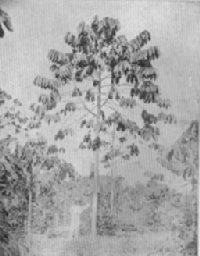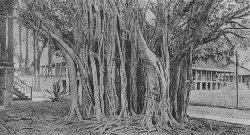|
But two centuries have elapsed since rubber was known only as a curiosity; today it is in common use in nearly every industry and household.
After this process the rubber is run through the "mixers," which consist of large hollow steel rollers having steam pipes inside of them, to furnish heat in the operation of mixing, and also a set of water pipes by which the rubber may be cooled when necessary. Through the rollers the rubber passes. So adhesive is it that it sticks fast to the rollers and has to be constantly cut off by means of a sharp knife, and thrown back, for another rolling. Great power is needed for this process because the sticky mixture retards the rollers. When the kneading is all but completed, a coloring compound is added to the mass to give it the tint desired in certain kinds of uses for which it is intended. After this, the rubber is run through four polished steel rollers, one above the other, and here it gets its proper thickness. These rollers or "calenders" are used also for crushing the rubber into cotton ducking, for making rubber cloth, etc. Manufactured rubber goods are made by this method of compression instead of by melting and pouring into molds. Charles Goodyear discovered the process of vulcanizing rubber, a process which consists in changing the chemical composition of rubber by heat, whereby its sticky and elastic properties are removed and the rubber is given greater durability. This process consists in submitting the rubber to a great pressure under heat, by means of hydraulic presses. Generally, about 2,000 pounds are brought to bear, and the presses are connected with steam so as to secure the desired heat. An odd method is employed to vulcanize rubber belts. A stretcher is used to take the stretch out of the belts. This is made up of two sets of heavy clamps, and a great hydraulic ram which exerts a pressure of 2,000 pounds to the square inch. In this manufacture, the belting has already been made by pressing the rubber into the cotton duck. This is now cut into strips of desired length, and the strips are laid, one over the other, until the thickness of the desired belt is obtained. Then a strip of thin, pure rubber is wrapped about the several folds. The whole belt may then be put into a steam press and vulcanized.
HOW SALT IS PRODUCED |

